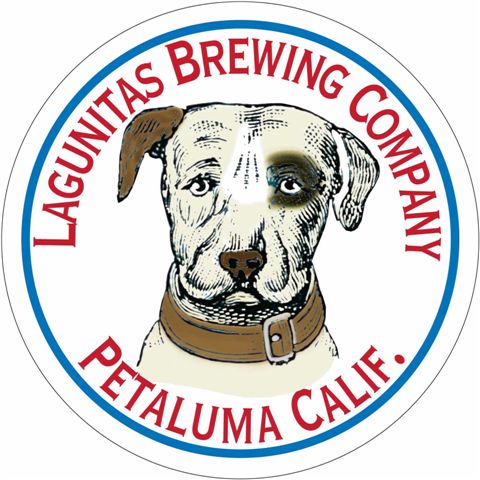
To be clear, I wasn’t exactly expecting to be amazed by MillerCoors’ newest “premium beer,” however I was intrigued by it and the way it was being marketed. Bloomberg was first to put together a piece on the beer. Between the various interviews in the article, it is mentioned that the primary reason for this beer’s existence is to try and bring market share back to beer from spirits.
“We asked, ’How would Jack Daniels or Maker’s Mark do a beer and why?’” said David Kroll, who was brought to MillerCoors from Dyson in 2012 to shake things up as its head of innovation. “We tortured every aspect to say, ’Are we falling back on what beer would do?’ Because this brand is intended to play in a spirits occasion.” (more…)
CraftHaus has moved one step closer to opening their brewery while simultaneously benefiting any future breweries planning on opening in the city of Henderson. They’ve worked with the city to get the brewpub license amended to something a bit more practical for startup breweries. To see the details of change, and how this benefits not just CraftHaus, but future breweries as well, read below. (more…)

Lagunitas’ CEO and founder Tony Magee took to Twitter late Thursday night with some interesting data about craft beer’s percentage of the beer market, and what that looks like for future growth, both with existing breweries, and with new breweries. It’s an interesting bit perspective from the 6th largest craft brewery in America, and I’ve always enjoyed Magee’s perspective on his business. I edited his statement slightly, only to fix all the “Twitter grammar,” to make it easier to read:
Was looking at IRA data. I added ALL the craft-type sales, meaning the narrow Brewers Association definition of craft beer, as well as Shock Top, Blue Moon, Craft Brewer’s Alliance brands, Guinness, Newcastle, etc… It turns out that the things y’all drink when y’all want flavor represent a freakin’ 12% market share, not the 6% share that is reported.
Could say that the extra 6% share represents the ACTUAL shortage of capacity within authentic craft beer. Makes building another brewery seem like a stoopid safe bet. I see Blue Moon & Shock Top, and the other faux beers as mere spackling in the cracks. A sort of beer-bondo that we can easily chip back out when we’re ready to use that market crevice ourselves. Maybe that sounds pompous, and maybe it is. And when I write ‘we’ I’m referring to all of us new brewers. Bottoms up!
In a recent newspaper thing I said that I thought Lagunitas could be as big as Anheuser Busch or MillerCoors. WTF does ‘big’ mean? Big is the result of something else. No one ‘owns’ big. It’s an artifact of your decision making. Could Lagunitas be that big? Sure. But in the end it’ll be up to you. We’ll just try. But like every mountain climber knows first hand, there’s nothing up there on the top. The trip is the thing, & we’re sure trippin’ lately.
Last week I posted an article about Stone building a brewery in Europe and how Dogfish Head could benefit from building a second brewery on the west coast (here). Today it was announced that Sierra Nevada has been visiting various cities on the east coast to determine a location for them to build a second brewery.
Their reasons for doing so are very similar to both the reasons Stone mentioned as to why they are building a brewery in Europe, and the reasons I suggested that Dogfish Head should build a second brewery on the west coast. They are at the point where in the next couple of years, their current brewery will be working at capacity. They also currently distribute to all 50 states and need to continue to do so. They want to grow as a company and also reduce the costs of shipping all over the country. They have not decided where they will build a brewery, when they will build it or if it even will happen. Chances are though, that this will happen as it likely makes the most sense from a business perspective. Sierra Nevada is currently the second largest craft brewery, right behind the Boston Beer Company, makers of Sam Adams. Sam Adams being the largest American brewery (remember, Budweiser, Miller, Coors etc are not American anymore), they own multiple breweries as well as contract other breweries to make their beer for them. To put things in perspective, Sierra Nevada will brew about 800,000 barrels (1 barrel = 31 gallons) of beer this year. Boston Beer Company on the other hand, brews over 2 million barrels of beer a year. It will be interesting to see what happens with Sierra Nevada’s expansion in the next few years.
Another interesting aspect of this story is that Sierra Nevada also included as a factor in choosing a city: potential quality of life for its employees. Great to hear about breweries treating their employees well.
The Stone Brewing Company have announced that they have plans to open a secondary brewery somewhere in Europe. This is an amazing idea, and something I wish other breweries would start doing as well.
First, let’s look at a company like Dogfish Head, the 11th largest craft brewer of 2010. They have grown immensely, especially recently. They are smart in that they have never wanted to grow too fast. However they are still growing remarkably fast. On the company blog and on Discovery’s Brewmasters show, they have publicly stated that they have had to dump batches of their rarer, specialty brews because it was not consistent with previous versions. When they dumped their 120 Minute IPA last year, it cost the company half a million dollars. People forget that beer contains living organisms (yeast) and simply doubling the recipe does not mean that the exact same beer will come out. The yeast can act differently from one batch to the next, especially when the batches are increased greatly. Besides this, Dogfish Head also regularly makes quite a few different beers that it does not distribute to the west coast. This is done to ensure that these particular beers are as fresh as possible. Recently they also announced that they would no longer distribute to England, Canada and 3 states currently in distribution. This is done so they can better focus on the states with the greatest demand and not simply growing bigger too fast. I’ve always wondered if it would be beneficial for business if they were to open a second brewery on the west coast. They could have their main Delaware brewery focused only brewing enough to distribution the east coast and their west coast brewery doing the same on the other side of the country. They could continue to brew smaller, consistent batches of beer and overall increase distribution to more states with more varieties.
Stone is doing something similar except in another continent. They state that the reason for this is to build their presence in Europe without the costs, financially and environmentally, of shipping beer across the world. They want to ensure that the best, freshest beer that best represents their company is available to Europeans. In addition to this, they will primarily only use ingredients available in Europe whenever possible. Because of this, they will be brewing different beers in Europe than what they currently brew in San Diego. They will still be in a style that is consistent with their brand but new recipes. Again in keeping with their reasoning for all this, the beers that they brew in Europe will not be distributed to the U.S. for the same reasons that they are not currently distributing beers to Europe.
I think this is going to turn out to be a huge success for Stone. They will create a global brand recognition without having to sacrifice quality. It will allow them to create even more unique beers using a greater variety of ingredients and overall increase distribution and sales. All of this can be done than cheaper than what it would cost if they were to try and accomplish these same goals all from their single brewery in San Diego, even if they were to expand it’s size. I would love to see this kind of thing happening more often. It doesn’t have to be in another continent or even country, but a secondary brewery can help a company like Dogfish to continue creating their off-centered ales for more off-centered people in more off-centered places.

